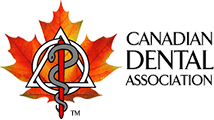If you or your child are considering orthodontic treatment, one of the first questions you may ask is: When is the best age to get braces or Invisalign? At Rowntree Dental, this is a question we hear all the time, and the answer isn’t always one-size-fits-all. The ideal age for orthodontic treatment can vary depending on the individual’s oral development, dental health, and personal needs.
Let’s break it down to help you understand the best timing for either braces or Invisalign—and what factors come into play.
Why Timing Matters in Orthodontics
Orthodontic treatment works by gradually shifting the teeth and aligning the bite using gentle, consistent pressure. The age at which this process begins can impact both the length and effectiveness of treatment. Starting too early might mean additional phases of care later on. Waiting too long, on the other hand, could make certain corrections more difficult.
That’s why we recommend a personalized approach, starting with an early orthodontic evaluation.
What’s the Best Age for Braces?
For most children, the ideal age to get braces is between 9 and 14 years old. At this stage, most of the adult teeth have erupted, but the jaw is still developing, making it easier to correct bite and alignment issues. Here’s a more detailed age breakdown:
Ages 7–8: Early Evaluation
The Canadian and American Association of Orthodontists both recommend that children have their first orthodontic evaluation by age 7. This doesn’t mean braces at 7—but it allows the dentist to identify any developing issues such as:
- Overbite or underbite
- Crowded or gapped teeth
- Jaw alignment concerns
- Habits like thumb-sucking that affect growth
In some cases, interceptive orthodontics may be recommended to guide jaw development or make space for incoming teeth.
Ages 9–14: Optimal Time for Braces
This is the most common age range for getting traditional braces. Most permanent teeth are in place, and growth spurts can actually help move teeth into better alignment. Treatment at this age tends to be faster and more effective compared to starting in the late teens or adulthood.
What’s the Best Age for Invisalign?
Invisalign has become a popular alternative to traditional braces—especially for older teens and adults. But did you know Invisalign now has options for younger patients too?
Invisalign First (Ages 6–10)
Invisalign First is designed for children who need early orthodontic intervention. It can help address:
- Arch development
- Expansion
- Spacing issues
- Mild bite problems
It’s a more comfortable and aesthetic option for younger kids who may be hesitant about braces.
Invisalign Teen (Ages 11–18)
Once all or most of the adult teeth have erupted, Invisalign Teen is a fantastic choice for many adolescents. It offers a discreet way to straighten teeth with features tailored to growing mouths, such as eruption tabs and wear indicators.
Adults (18+)
It’s never too late for Invisalign! In fact, many of our adult patients at Rowntree Dental choose Invisalign to discreetly improve their smile without the appearance of metal braces. Treatment may take a bit longer in adults, but the results are just as rewarding.
Factors That Determine the Right Time
Everyone’s mouth is different, so the best age for braces or Invisalign ultimately depends on factors like:
- Tooth eruption: Most permanent teeth should be in place.
- Jaw growth: Younger patients with growing jaws often respond better to treatment.
- Severity of misalignment: Some issues require early intervention, while others can wait.
- Patient maturity: Invisalign, in particular, requires commitment to wear aligners for 20–22 hours per day.
- Oral hygiene habits: Braces and aligners both require good brushing and flossing routines to avoid cavities and gum problems during treatment.
At Rowntree Dental, we take all of these factors into account to create a treatment plan that’s just right for you or your child.
Final Thoughts: It’s Never Too Early—or Too Late—to Get Evaluated
Whether you’re a parent of a young child, a teen considering Invisalign, or an adult ready to improve your smile, the first step is a professional orthodontic evaluation. At Rowntree Dental, we offer comprehensive assessments to determine if and when braces or Invisalign is the right choice.
Book your consultation today and take the first step toward a healthier, more confident smile.
Ready to Get Started?
If you’re wondering whether it’s the right time for braces or Invisalign, we’d love to help. Contact Rowntree Dental today to schedule a personalized consultation with our experienced dental team. Your perfect smile may be closer—and easier—than you think!




